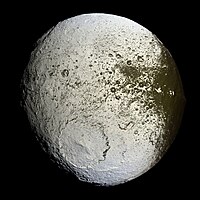
Photo from wikipedia
Hypervelocity impact (HVI) of materials is usually associated with large deformations of structures, big craters, phase transition of materials and scattered debris cloud. It is difficult to predict the size… Click to show full abstract
Hypervelocity impact (HVI) of materials is usually associated with large deformations of structures, big craters, phase transition of materials and scattered debris cloud. It is difficult to predict the size of damage caused by HVI while comprehensively considering all the influencing factors for both experimental and numerical approaches. In this paper, the HVI process is modeled by using the smoothed particle hydrodynamics (SPH) method with Kernel Gradient Correction (KGC) technique. The SPH method with KGC (SPH-KGC) has been demonstrated to have better accuracy and reliability for modeling the HVI problems in our recent work. In this paper, the SPH-KGC method is used to investigate the HVI of a sphere on a target plate. The sizes of the craters produced by HVI at different initial impact velocities are obtained, and the variation of the crater size over the impact velocity is studied. According to the present simulation results, a critical velocity is identified and the increase of the crater size versus the initial impact velocity can be divided into two stages, a varying stage and a steady stage. A new empirical formula is presented for predicting the crater size of the target plate produced by HVI. This formula comprehensively considers the influence of many model parameters, such as the densities of the materials of both the projectile and the target, the sound speed of the target material, the diameter of the projectile and the thickness of the target plate. The results obtained by the presented prediction formula agree well with the experimental observations as well as the present SPH simulation results.
Journal Title: International Journal of Computational Methods
Year Published: 2019
Link to full text (if available)
Share on Social Media: Sign Up to like & get
recommendations!